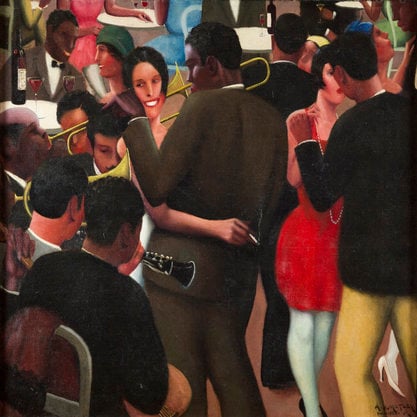Overview
Music Subject Overview By Goldman, Jonathan
Overview
Musical modernism is understood here in the broadest sense, including compositional practices from the late twentieth and early twenty-first centuries. Of course, modernist practice is sometimes very narrowly associated with developments that occurred around 1910. That is, to put it rather crudely, they are equated with the “emancipation of the dissonance” that characterizes the atonal practice of Arnold Schoenberg and the Second Viennese School. And yet, broadening this definition aligns with a growing tendency among music scholars to move beyond an historical narrative that sees modernism as being supplanted by postmodernism. David Metzer, for example, describes certain works composed after 1980 by composers such as György Kurtag, Kaija Saariaho, Helmut Lachenmann, Gérard Grisey, or Brian Ferneyhough as “late modernism,” claiming that at the turn of the twenty-first century, modernism “has not been supplanted” (Metzer 2009: 1–3). Similarly, Alastair Williams characterizes some works composed since 1970 as “transformed modernism” (Williams 1997: 148. Quoted in Metzer 2009: 2), while Claus-Steffen Mahnkopf sees the practices of certain composers born around 1960 as an aesthetic return to the foundations of the first generation of musical modernists. Transposing to music a taxonomy proposed by Heinrich Klotz with respect to the visual arts, he refers to a “Second Modernity,” explaining that “The second modernity does not define itself merely negatively as a rejection of postmodernism, however, but also positively, by expressing solidarity with the tenets of classical modernism and the avant-garde. These are above all the belief in experimentation and innovation, and the conviction that construction, i.e., the technical validation of the musical discourse, is indispensable” (Mahnkopf 2008: 9; Klotz 1994).
The other guiding principle of the Music Subject Area is the importance of regional modernist practices, meant to serve as a counterweight to the usual narratives that see modernism as emanating from a single source. Indeed, historians of musical modernism have lately shown an interest in exploring the diversity of modernist musical practices in different sites of its production. By refusing to accept the binary opposition “centre/periphery” that classical modernist historiography imposes, sites of modernist musical production can be studied for their specificity, rather than as emanations from a notional aesthetic center. As Shmuel Eisenstadt has noted, “The idea of multiple modernities presumes that the best way to understand the contemporary world—indeed to explain the history of modernity—is to see it as a story of continual constitution and reconstitution of a multiplicity of cultural programs” (Eisenstadt 2000: 2). One of the chief goals of this project was to try to elucidate the relationship between local scenes of modernist musical creativity and the international currents in which they can be inscribed. In order to achieve this goal, it was necessary to set aside (however provisionally) a persistent myth that treats all modernist practice as a monolithic whole that employs a common musical lingua franca (whether atonal, serial, statistical, spectral, or whatever). Rather than envisioning the modernist current as a geographically and temporally homogeneous whole, the Music Subject Area of the Routledge Encyclopedia of Modernism aims to highlight the specificities of musical manifestations of modernism in different locales, and takes seriously historical, linguistic, and cultural differences, inspired by the burgeoning field of cultural geography (Krims 2007). The entries in this section aim to demonstrate the ways in which creative practices arise spontaneously in various particular regions through a mixture of sociocultural conditions and the presence of certain strong personalities, rather than emanating from a single, central source and then getting “implanted” in various peripheral regions. By comparing regional hubs of musical effervescence, not only do the similarities and differences of each come to the fore, but the networks that each hub shares are also thrown into relief.
It would be comforting to claim, as the ritual phrase goes, that “no attempt was made here to offer an exhaustive survey,” and yet, however comforting to the editors and to myself this kind of proviso may be, it contradicts the mission of this encyclopedia to cover “modernism across all disciplines and regions.” Let us then boldly—and baldly—state that an attempt at being exhaustive was in fact made, and that it failed wretchedly! And yet, such failure is both predictable, inevitable, and... utterly defensible; it doesn’t diminish the potential for the entries included here, by both eminent and emerging scholars, to enrich the conversation on musical modernism taking place in classrooms, lecture halls, concert hall foyers, and online. To take but one example, the Music Subject Area of the Routledge Encyclopedia of Modernism contains one of the most extensive English-language resources on musical modernism in Latin America, in large part owing to the tireless efforts of Advisory Board member Eduardo Herrera (Tufts University). As for missing persons, they are of course legion; I follow the dictum of the General Editor, Stephen Ross, for whom whosoever complains about a lacuna is at once volunteering to fill it!
